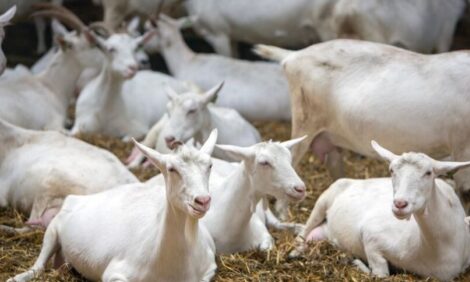



25 Years of Technical Development
By John Fleming, British Blue Cattle Society. Last year was a year to remember in more ways than one for the ‘British Blue Cattle Society’.The society said that apart from the problems that the whole of the industry faced over floods, Foot and Mouth disease and Bluetongue restrictions, it was the year that the ‘Blues’ forged their own identity and became 25 years old.
The annual May sale at Borderway Mart in Carlisle, saw an international gathering celebrating the Silver anniversary of the first importations of 'Belgian Blues' from their home country in 1982. Guests were drawn from many part of Europe, with good wishes coming from as far away as Austral-Asia and South America.
Over the years the society said its executive Council has taken technical development very seriously on behalf of its members and has been working closely with Liverpool University, geneticists at Liege University in Belgium and the University of New England in NSW as part of Breedplan Genetic Evaluation, the Roslin Institute and the Genesis Faraday Partnership.
 |
| British Blue Cattle Society |
"It has been recognised in research circles that the 'British Blue' has accumulated a greater pool of information, either as raw or BLUPed data relating to the bovine than possibly any other breed. This has been acknowledged as a credit to the responsible, technical focus, of the 'British Blue' Society," according to one geneticist.
In 1990, the society recognised the changes British breeders had made over the years and started marketing British bred 'Blues' as the 'British Type', specifically developed to suit the British meat trade and British farming practices. To coincide with the 25th anniversary, the Society continued this evolution by changing its name to the 'British Blue Society' and promoting the 'Blue in the UK as 'British Blues', thus distancing the society from Belgian farming practices, but not necessarily Belgian, easy calving, genetics.
Society secretary John Fleming said: "The stereotype of the 'Belgian Blue' as a heavily muscled breed that has difficulty in calving is no longer true of the ‘British Blue’. Of those animals calving with natural intent, independently verified parturition statistics, have been improved to such an extent that they are becoming very close to the bovine norm. This is a tremendous credit to the tireless work of breeders over the years and the dedication to technical advance, by the Society Executive Council.
"In addition serious attention has been given to addressing size, stature, and good mobility. This has all contributed to ‘British Blues’ being highly sought after in the export markets of the EU and elsewhere in the world."
Mr Fleming added: "In recent years 'British Blue' genetics have been exported to Chile and Australia. In both markets virtually all the offspring have been born perfectly naturally out of pedigree cows."
The secretary of the Australian Belgian Blue Society said: "On my own farm, all our breeding cows have calved naturally in the past 12 months and we have just finished calving our ET calves out of crossbred recipients, all calved naturally, unassisted, with one giving birth to twins. These calves were all sired by British genetics; this is a sure, testament of the UK. . Long-term, I would envisage our breed to be close to 100 per cent natural calving, hopefully dismissing much stigma attached to the Belgian Blue breed."
Another first for the British Blues in 2007 was the introduction of the Pedigree Breeding Index.
* "When used on a Holstein/Friesian the Blue is the one beef terminal sire, which will produce a quality beef carcass, out of this extreme dairy type." |
|
Stephen Brough, from Dalston, Cumbria
|
"This is particularly associated with the ability of the ‘Blue’ to calve on time and the associated lower birth weight," said society Chairman Jim Barber.
Stephen Brough, from Dalston, Cumbria said: "Whilst humane slaughter is not a welfare issue, the putting down of large numbers of healthy calves in the dairy sector is an ethical one. British Blue genetics have played a major part in reducing this death toll, estimated at well in excess of 50,000 calves per year. When used on a Holstein/Friesian the Blue is the one beef terminal sire, which will produce a quality beef carcass, out of this extreme dairy type."
It is estimated that, where a beef bull is used in the dairy sector, 75 per cent of semen sold is British Blue; with an estimated 160,000 straws being used during the year. January 2008



